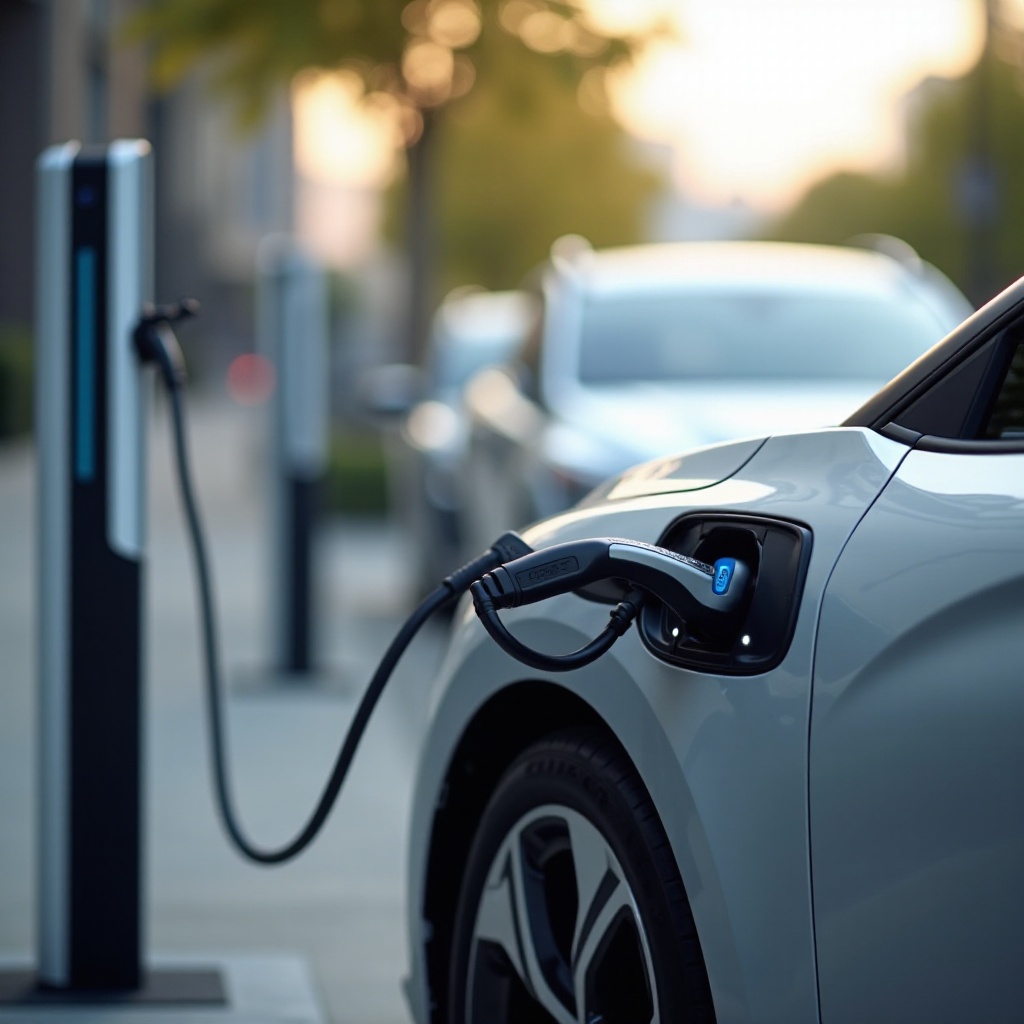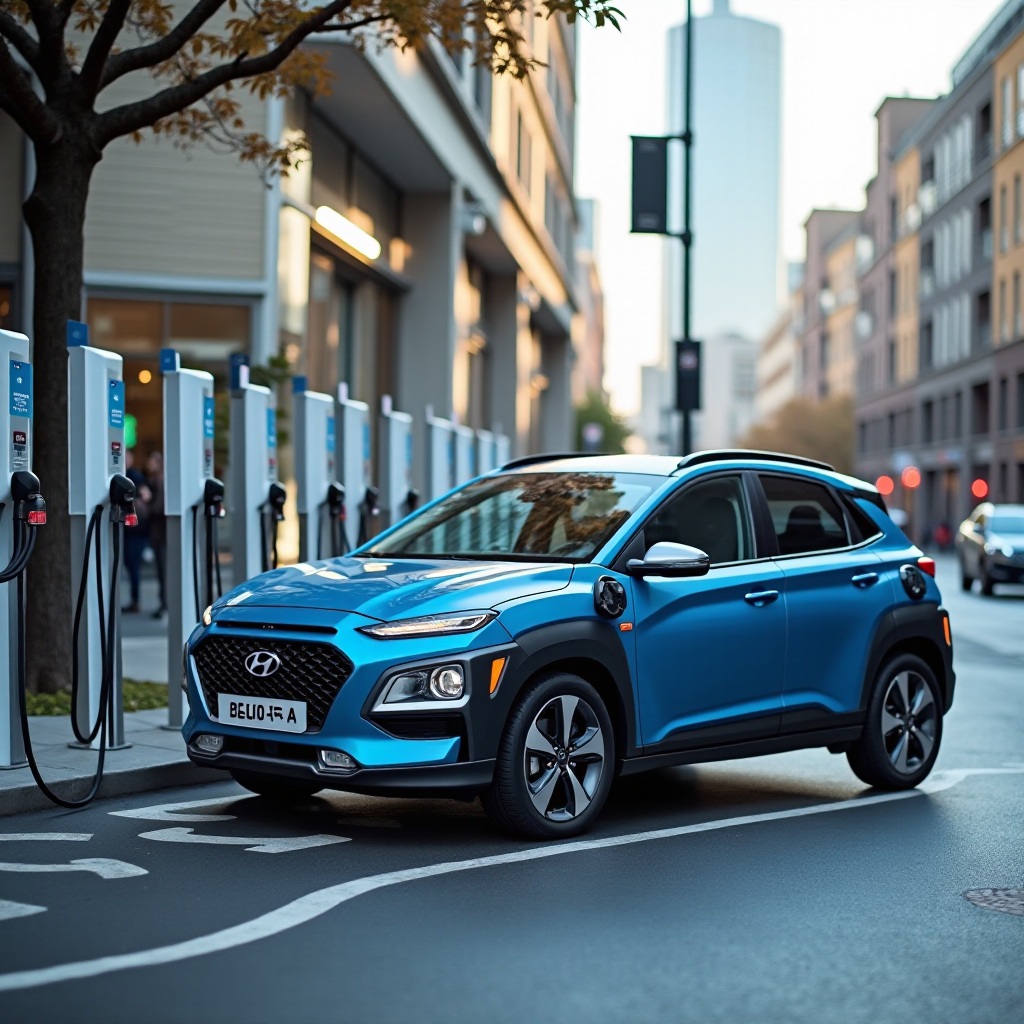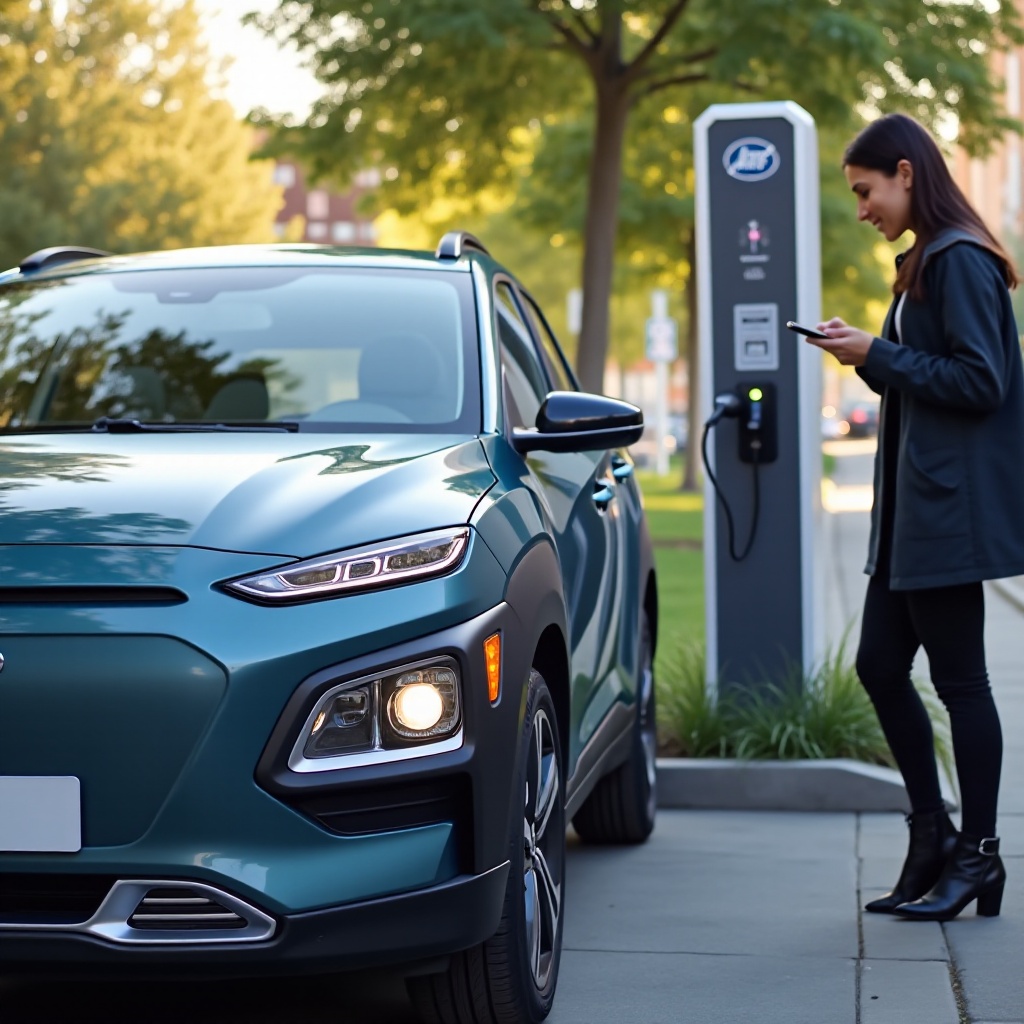Introduction
The Hyundai Kona Electric is making waves in the electric vehicle market with its impressive range and performance capabilities. To truly benefit from this EV, understanding how to effectively charge it is key. This guide will walk you through every aspect of charging your Hyundai Kona Electric, from understanding the different charging options available to optimizing your charging experience for maximum efficiency. Whether you’re setting up a home charging station or planning to use public chargers on the go, this detailed guide will help you make informed decisions.

Understanding Hyundai Kona Electric Charging Options
Charging your Hyundai Kona Electric involves different methods, each with its own characteristics. The vehicle supports multiple charging levels:
-
Level 1 (120V AC Charging): This is the standard home outlet charger. Ideal for overnight charging, it typically adds about 4-5 miles of range per hour.
-
Level 2 (240V AC Charging): This requires a dedicated EV charging station, often installed at home or public locations. It provides faster charging, adding approximately 24-25 miles of range per hour.
-
Level 3 (DC Fast Charging): Found at public charging stations, DC fast chargers add around 80 miles of range in just 30 minutes. Ideal for long road trips and quick top-ups.
Having a clear understanding of these options will help you select the right charger for your needs, whether you’re charging at home, on the road, or at your destination.
Home Charging Solutions
One of the most convenient and cost-effective ways to charge your Hyundai Kona Electric is at home.
Level 1 Charging can be done using the portable charger that comes with your vehicle. Simply plug it into a standard 120V outlet. Although this method is slower, it works well for overnight charging if your daily mileage is on the lower side.
Level 2 Charging is quicker and more efficient. Installing a Level 2 charger at home usually requires professional installation by an electrician. While this is a more significant investment upfront, the reduced charging time is worth it. Key aspects to consider when choosing a home charger include:
- Output Power: Chargers with higher kilowatt ratings will charge your vehicle faster.
- Installation Costs: These can vary depending on your home’s electrical system.
- Features: Opt for a smart charger with Wi-Fi capability for remote monitoring and scheduling.
Having a reliable home charging solution ensures that your vehicle is always ready to go, providing flexibility and peace of mind.
Public Charging Infrastructure
The expansion of public charging infrastructure offers numerous options for Hyundai Kona Electric owners. These chargers are generally classified into three categories:
Level 2: Widely available at shopping centers, restaurants, and parking facilities. These chargers are perfect for topping up your car while you run errands or enjoy a meal.
DC Fast Chargers: Ideal for long-distance travel, these are typically situated along highways and main roads. Apps like PlugShare can help you find these stations, plan your route, and check real-time availability.
Network Memberships: Many public charging stations are part of networks like ChargePoint, EVgo, or Electrify America. Signing up for membership programs can provide access to reduced rates and simplify payments.
As public charging infrastructure continues to grow, it becomes easier to travel long distances without worrying about finding a place to charge.

Charging Costs and Efficiency
The costs associated with charging your Hyundai Kona Electric can vary based on the types of chargers used and local electricity rates.
- Home Charging Costs:
- Electricity Rates: Calculate your costs based on your local utility rate per kWh. For instance, if the rate is $0.13 per kWh, fully charging the Kona’s 64 kWh battery would cost around $8.32.
-
Time of Use Rates: Some utilities offer lower rates during off-peak hours, typically at night. Scheduling your charging during these times can save you money.
-
Public Charging Costs:
- Membership Benefits: Joining networks can offer lower per-kWh prices or flat rates for members.
-
Pay-per-Use: Rates can vary by location and station type. Fast chargers are typically more expensive than Level 2 chargers.
-
Charging Efficiency:
- Battery Health: Regular use of DC fast chargers can stress the battery over time, potentially shortening its lifespan.
- Optimal Charging Level: Keeping your battery between 20-80% can maximize its efficiency and longevity.
By understanding these factors, you can budget effectively and maintain your vehicle’s performance.
Tips for Optimizing Your Charging Experience
Follow these tips to get the most out of your Hyundai Kona Electric’s charging capabilities:
-
Precondition Your Battery: Use the vehicle’s app to warm up or cool down the battery before charging, which can improve charging efficiency, especially in extreme temperatures.
-
Reduce DC Fast Charging Frequency: Relying too much on fast charging can degrade battery health over time. Use Level 2 chargers whenever possible for routine charging.
-
Plan Your Trips: Utilize navigation tools and charging apps to map out charging stations along your route, ensuring you never run out of power unexpectedly.
-
Monitor Energy Use: Apps and in-car systems can provide insights into your charging habits, helping you adjust to more efficient patterns.
By following these tips, you can maximize the life and performance of your vehicle’s battery while keeping costs manageable.

Conclusion
Effectively charging your Hyundai Kona Electric is crucial for making the most of this innovative vehicle. By understanding the different charging options, considering home solutions, using public infrastructure wisely, managing costs, and following best practices, you can ensure a smooth and cost-effective ownership experience. This guide aims to empower you with the knowledge needed to make the best decisions for your charging needs.
Frequently Asked Questions
What are the different types of chargers for Hyundai Kona Electric?
The Hyundai Kona Electric supports Level 1 (120V), Level 2 (240V), and Level 3 (DC fast charging) chargers. Each type has varying charging speeds and best-use scenarios.
How long does it take to fully charge a Hyundai Kona Electric?
Charging times can vary: – **Level 1:** About 50-60 hours for a full charge from a regular home outlet. – **Level 2:** Approximately 9 hours for a full charge using a dedicated 240V outlet. – **Level 3:** Around 75 minutes to charge to 80% using a DC fast charger.
How can I reduce charging costs for my Hyundai Kona Electric?
To minimize costs: – **Charge during off-peak hours** if your utility offers lower rates. – **Take advantage of public charging networks** that offer membership discounts. – **Optimize charging efficiency** by maintaining battery health and using smart charging features.
